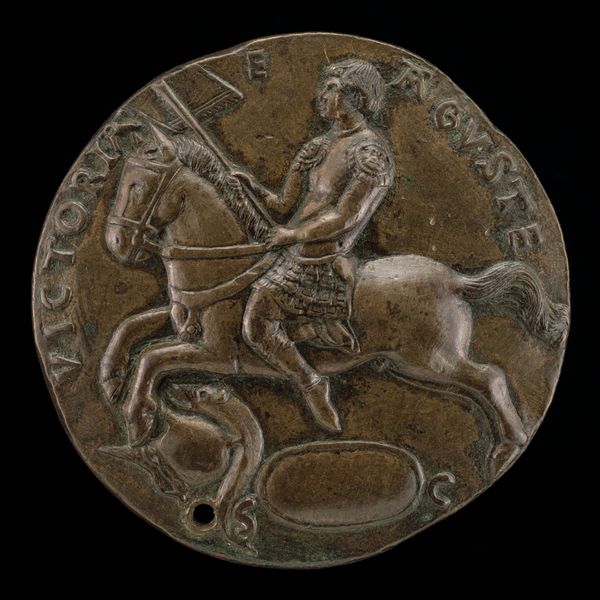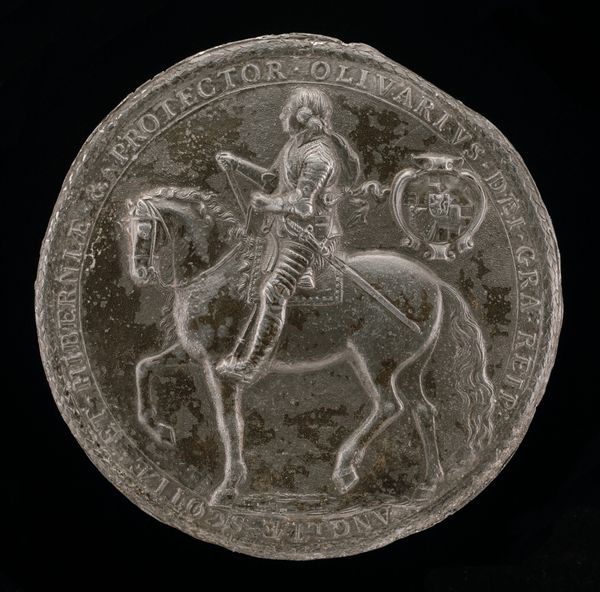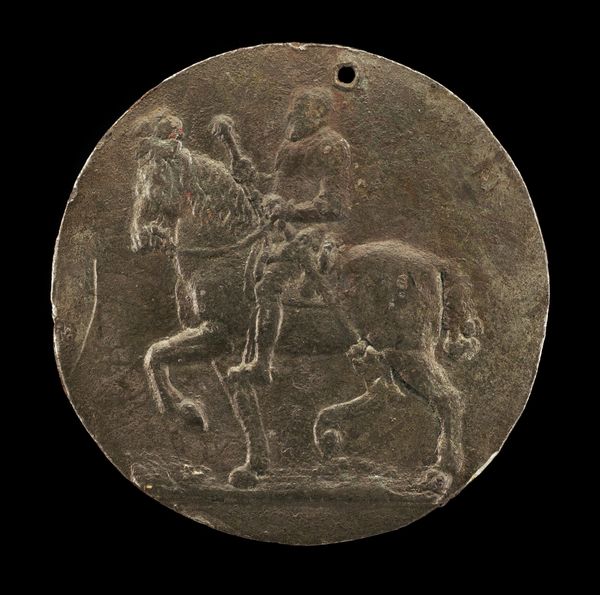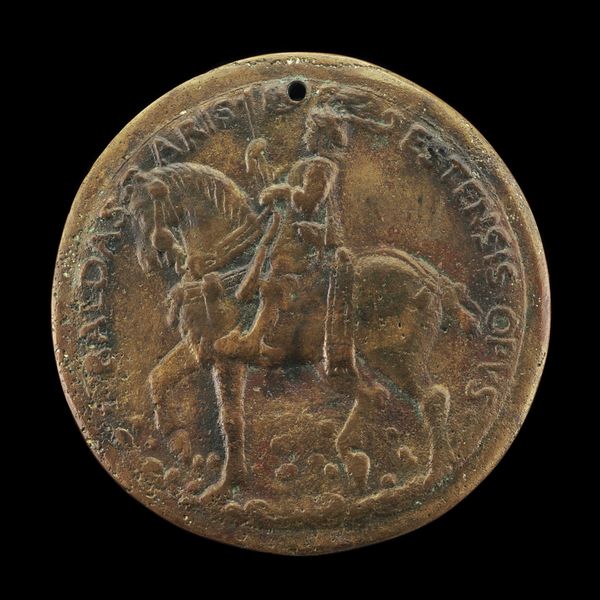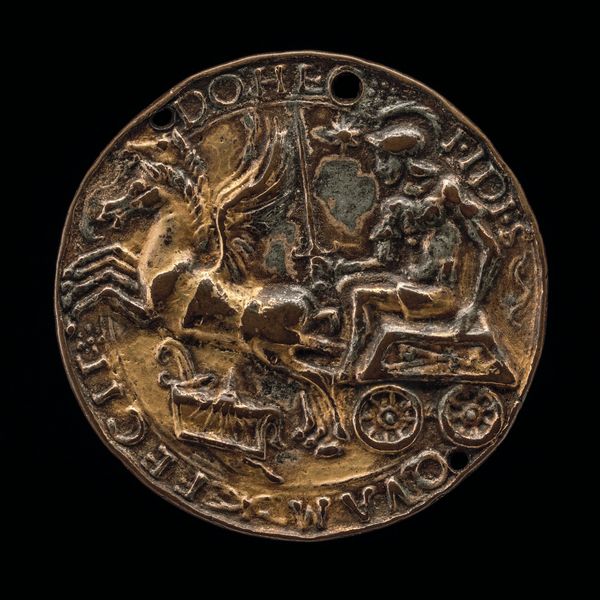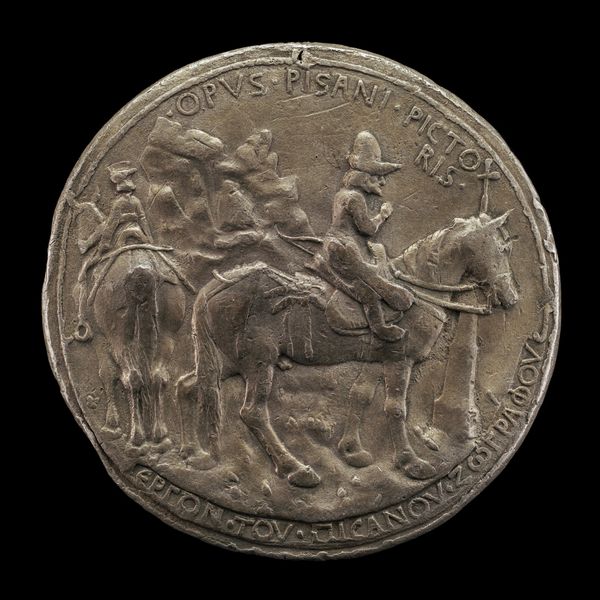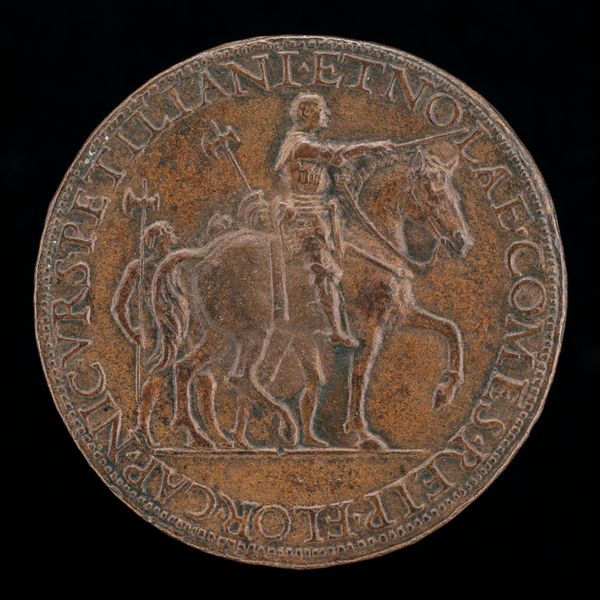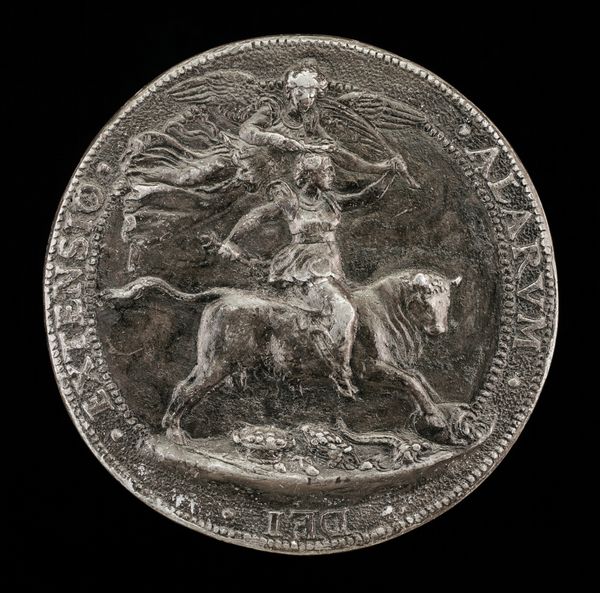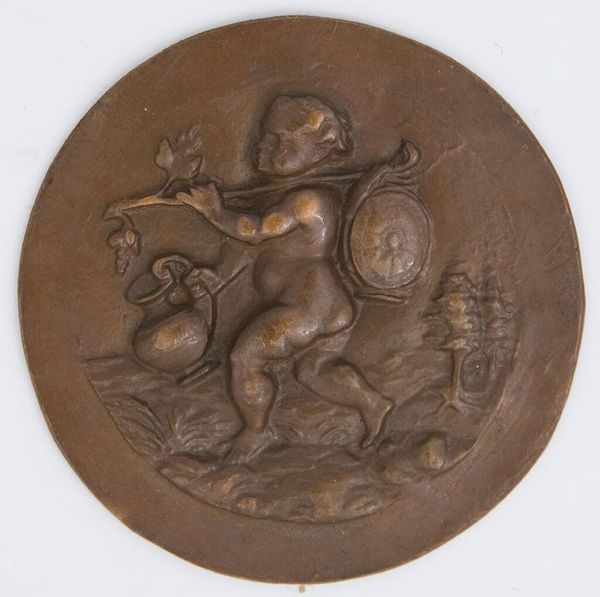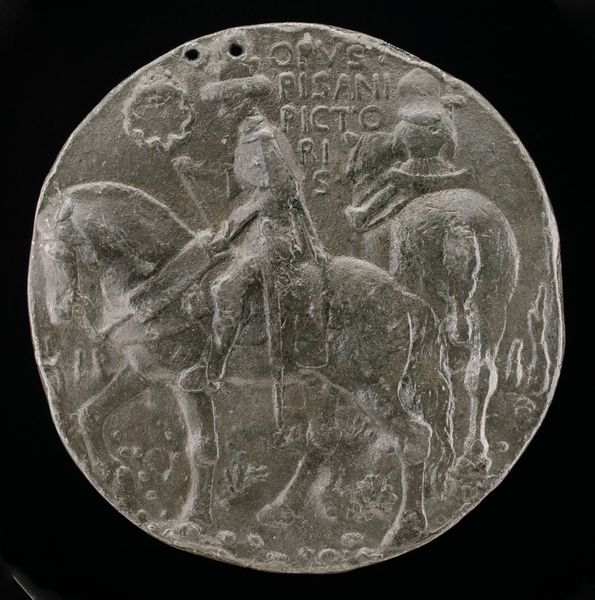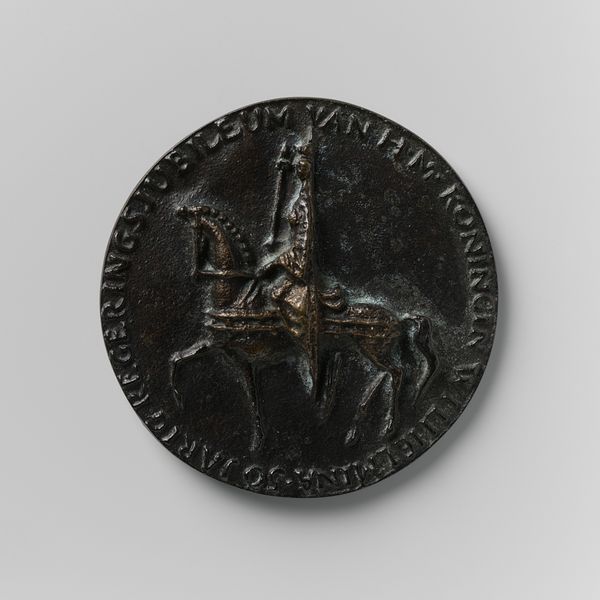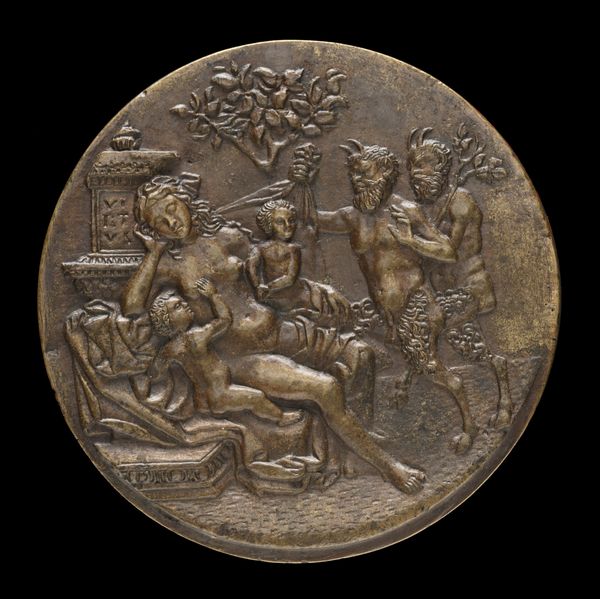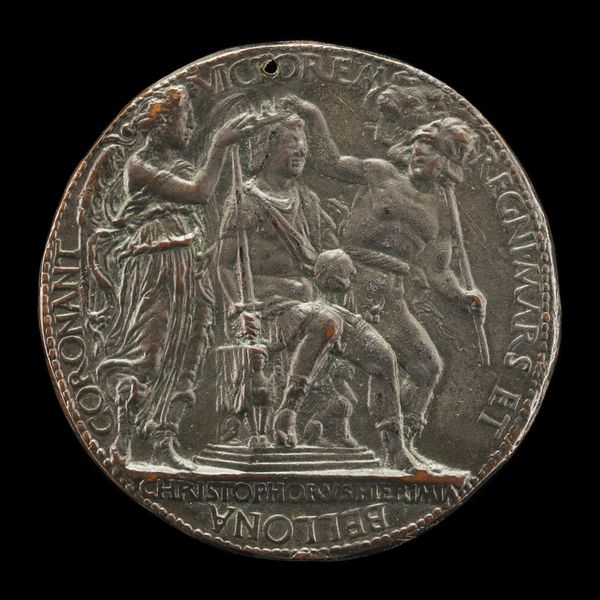![Equestrian Figure of Marcus Croto [reverse] by Varrone Belferdino](/_next/image?url=https%3A%2F%2Fd2w8kbdekdi1gv.cloudfront.net%2FeyJidWNrZXQiOiAiYXJ0ZXJhLWltYWdlcy1idWNrZXQiLCAia2V5IjogImFydHdvcmtzL2M0NGM4N2M1LTVkYjUtNDVlYi05ZjQxLTAzMjBkYTM0NTY4Ny9jNDRjODdjNS01ZGI1LTQ1ZWItOWY0MS0wMzIwZGEzNDU2ODdfZnVsbC5qcGciLCAiZWRpdHMiOiB7InJlc2l6ZSI6IHsid2lkdGgiOiAxOTIwLCAiaGVpZ2h0IjogMTkyMCwgImZpdCI6ICJpbnNpZGUifX19&w=3840&q=75)
Equestrian Figure of Marcus Croto [reverse] c. mid 15th century
0:00
0:00
relief, bronze, sculpture
#
portrait
#
medal
#
stone
#
sculpture
#
relief
#
bronze
#
figuration
#
sculpting
#
sculpture
#
history-painting
#
italian-renaissance
#
statue
Dimensions: overall (diameter): 6.31 cm (2 1/2 in.) gross weight: 59.38 gr (0.131 lb.)
Copyright: National Gallery of Art: CC0 1.0
This bronze medal portraying Marcus Croto on horseback was made in Italy by Varrone Belferdino in the mid-fifteenth century. Its imagery presents us with a fascinating window into the cultural and political climate of Renaissance Italy. The iconography of the equestrian figure, borrowed from ancient Roman art, was a popular way for rulers and military leaders to project an image of power, authority, and classical virtue. The inscription 'Victoriae Gratia,' celebrates a military victory, emphasizing the importance of warfare in the social and political life of Renaissance city-states. Equestrian portraits had been revived by the Italian city states as secular alternatives to religious devotion. To fully understand the cultural significance of this medal, historians consult archival documents, contemporary literary sources, and other visual artifacts. This allows us to reveal the complex social, political, and intellectual forces that shaped its creation and reception.
Comments
No comments
Be the first to comment and join the conversation on the ultimate creative platform.
